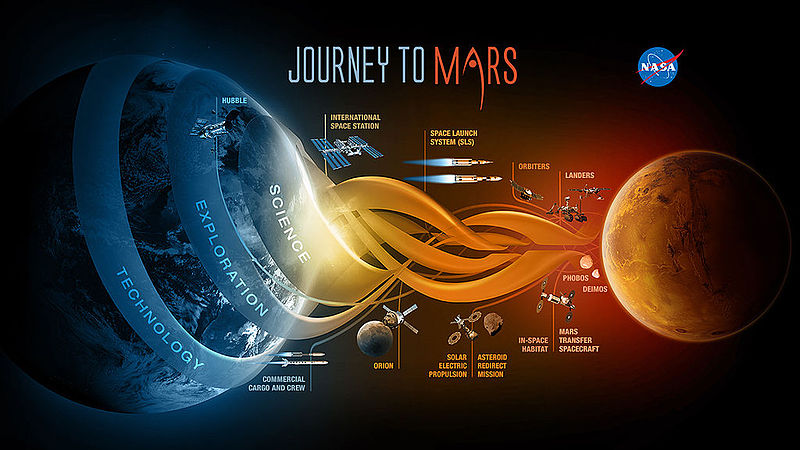To Mars and Beyond
Humans may eventually travel to Mars
December 11, 2018
After a 6 month long journey through space, at 2:54 p.m. ET on November 26, NASA’s newest robot called the InSight lander landed on the surface of Mars (Nationalgeographic). Intense anticipation filled the Jet Propulsion Laboratory in California as the entry, descent, and landing engineers waited for a response from the lander. The time it takes for the signal to reach the Earth from Mars is coined the “7 minutes of terror”, and for a good reason too. When the engineers get the first signal from the lander, it has either been alive or dead for 7 minutes. All of the engineers jump from their chairs at 3:03 p.m. ET after a signal from the InSight lander of a successful land to celebrate and congratulate their peers on their success. The room broke out in enthusiastic clapping, celebratory hugs, and even self-choreographed handshakes.
The spacecraft is the newest member of other robots, including the Mars Reconnaissance, that is currently exploring Mars. The mission of the InSight lander for the next two years is to measure the size of the planet’s core and interior layers. One of its prominent goals while in operation is to analyze the seismic activity of Mars. All of the information that the lander gathers will help scientists to discover how planets are formed and how they evolve. Not only will we gain a better understanding of our own solar system, but we will also learn more about other distant planets (nationalgeographic.com). Photos provided by the InSight lander have already made us the first humans in history to view a sunset on Mars (fastcompany.com).
With all of the progress and development that has been, and continue to be, made in space exploration, it is not outrageous to consider future human visits or even the potential inhabitation of planets like Mars. Only about 60 years ago, the Soviet Union sent the first satellite into space on the Sputnik mission in 1957. Today, NASA alone has completed 135 space shuttle missions (space.com).
The countless science fiction movies and books depicting humans living on alien planets might prove to be more science than fiction as NASA has stated that “[they are] developing the capabilities needed to send humans to an asteroid by 2025 and Mars in the 2030s” (nasa.gov). Scientists are currently striving to develop technologies that astronauts will be able to use one day to live and work on Mars and also return home safely.
All of these developments and future goals beg the question: if you had the chance, would you visit Mars?
While Alli Provenzano (12) would like to say “of course, to infinity and beyond, the risks of traveling to Mars scare [her].” She mentions that “[she] would only consider visiting Mars, assuming that the opportunity was offered for some reason if there was a definite confirmation that [she] would be able to return to Earth, and not become stranded on Mars,” her anxieties stemming from the plot of the film The Martian.
Overall, is NASA continues its success like it had with the InSight lander, manned missions to Mars are a real possibility in the near future, being the next giant leap for mankind.





































